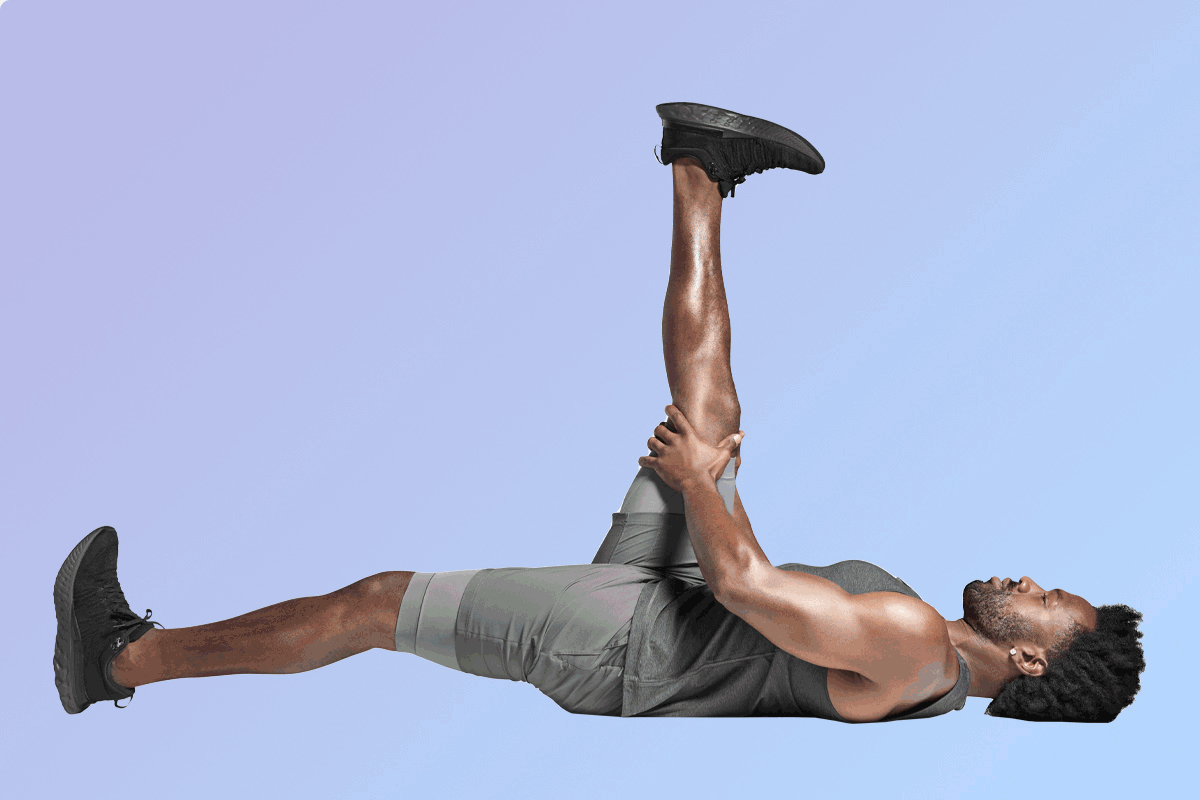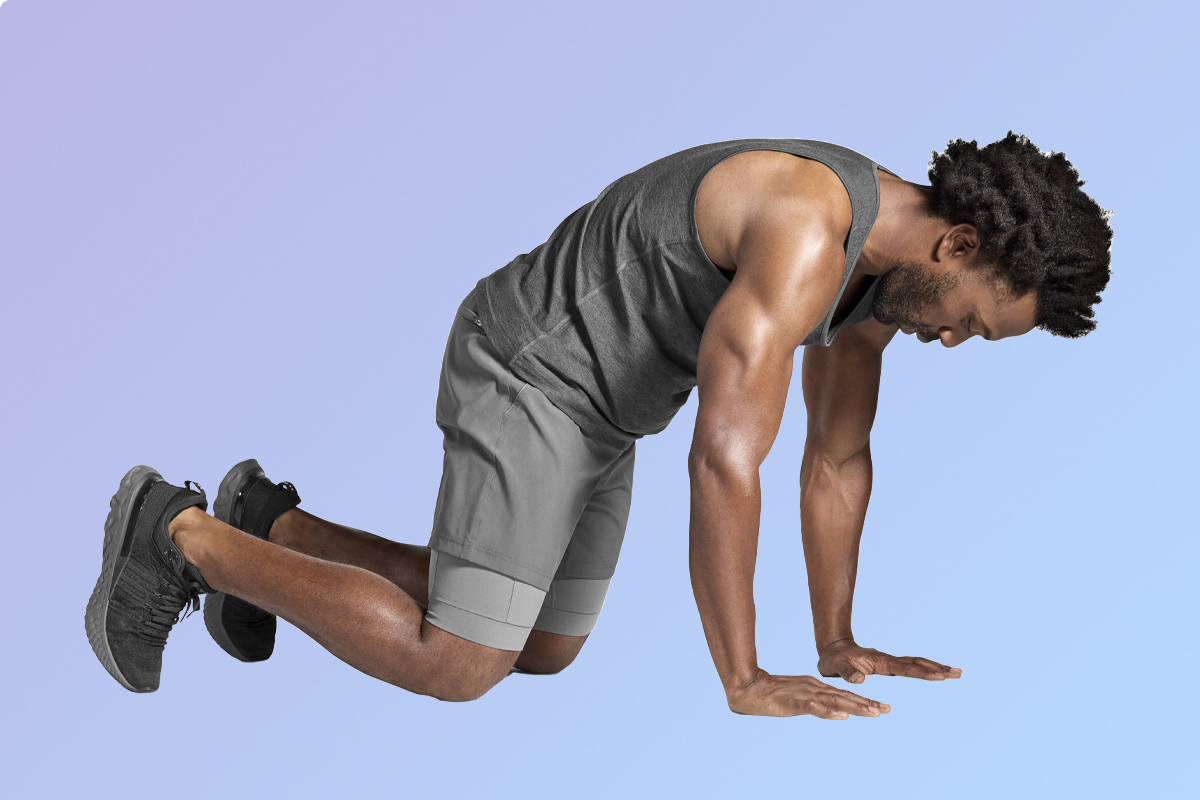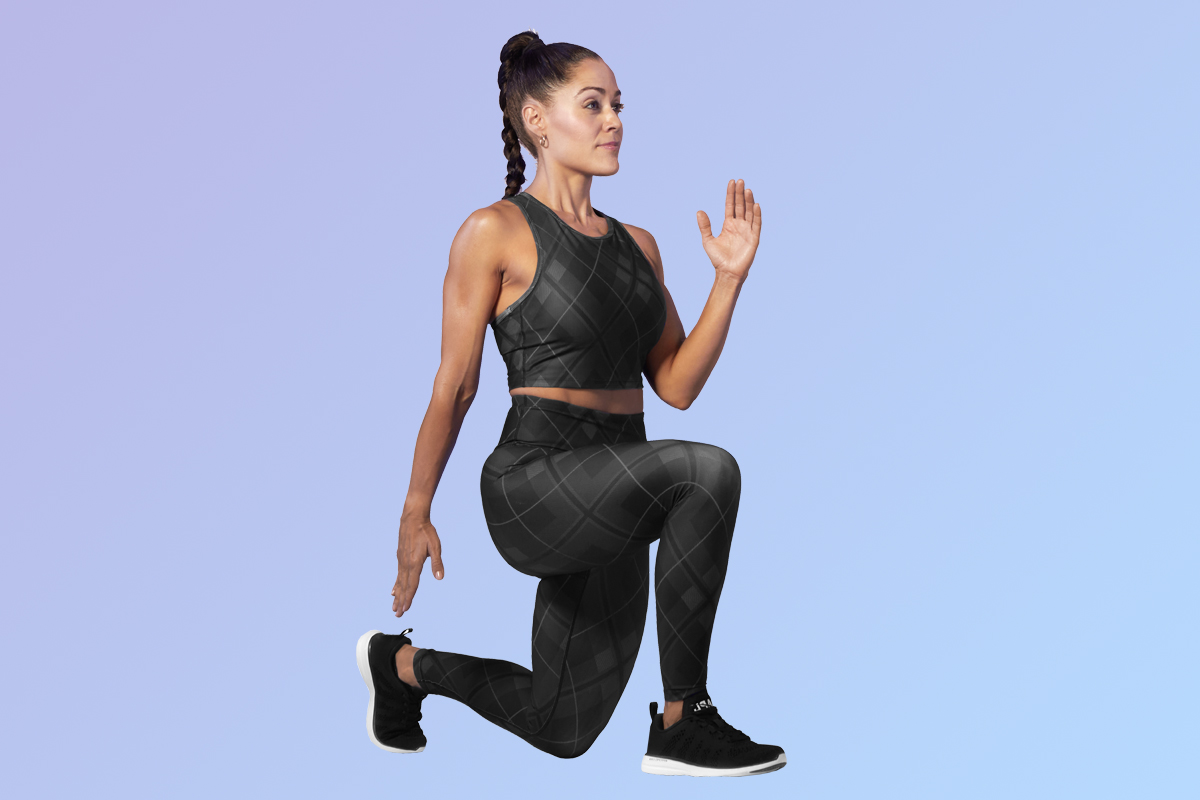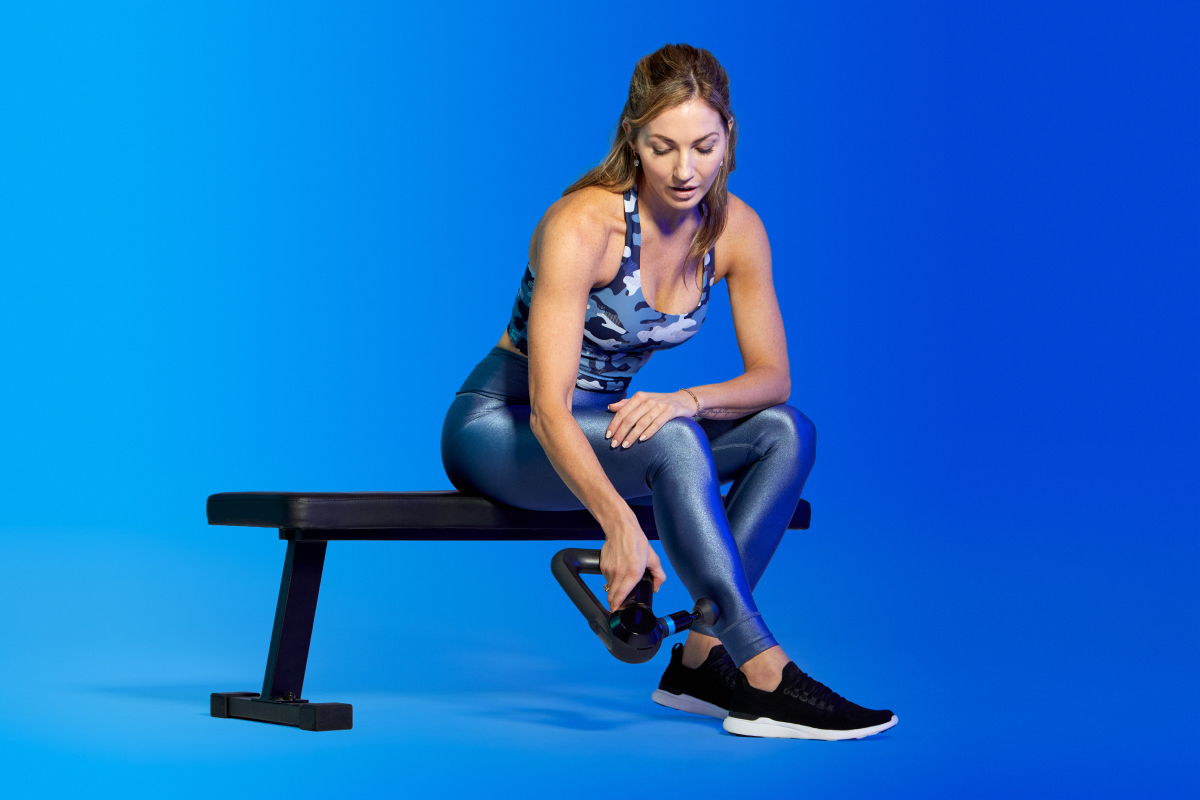Coach Allison and Coach Liz share their favorite moves to keep you going, even when you’re sore.

You crushed leg day yesterday. Now, just squatting down to sit feels like a monumental undertaking. It might be time for active recovery.
“The ingredients of an active recovery workout are still going to resemble a traditional workout, but they will be slightly less demanding and the intent might be a little bit different,” says John Christie, Tonal’s Director of Curriculum Intelligence. So if your legs are sore, you might do exercises such as lunges and squats with far less weight or just your bodyweight.
Even if you’re trying to hit big goals, it’s beneficial to occasionally drop the weight and do a less intensive workout. “The harder you work, the harder you have to recover,” says Tonal Coach Allison Tibbs, a NASM-certified personal trainer and nutrition coach. “Active recovery is an opportunity to nourish the muscles and create the conditions for even better results later.”
Active recovery can start immediately after a strenuous workout if you carve out time for light stretching support all your hard work. “It’s like a debrief,” Coach Allison adds.
Soreness is often due to inflammation, which gentle movement can help relieve, Tonal Coach Dr. Liz Letchford, PhD explains. “Active recovery helps to encourage the lymphatic drainage of any excess inflammatory byproducts while also eliciting an analgesic [pain-relieving] effect through the chemicals released in response to exercise,” she says. Unless you’re dealing with an injury, Coach Liz agrees that it’s a good idea to keep moving.
Passive recovery — a complete break from exercise or extra time spent in bed — deserves a place in your routine, too, but to get blood flowing to sore muscles and promote healing, you’ll want to spend time on active recovery. Try these exercises in the morning to wake your body up or pepper light stretching breaks into your work day if you spend most of the time sitting.
Check out the list below for some of Coach Allison’s and Coach Liz’s favorite active recovery moves for all the major muscle groups.
Prone Shoulder Sweep

Target Area: Chest and shoulders
How to do it: Get into a tall kneeling position seated on your heels, with hands on the floor in front of you. Take one arm and reach it ahead of you, palm facing the floor. Keep your arm straight, try to touch the walls around you as you sweep the arm out to the side and then behind you. Slowly rotate at the shoulder to face your palm up to the ceiling as you bend your elbow and then rest your hand on your low back. Reverse the movement and repeat. Repeat on the same side.
Why it works: “Moving through the entire shoulder range of motion while promoting a strong muscular contraction helps to alleviate soreness while also improving the neuromuscular integrity of the shoulders as they recover,” says Coach Liz.
Reach and Rotate Opener

Target Area: Shoulders and back
How to do it: Get into a tall kneeling position on your mat and then sit back on your heels. Bring one hand out in front of you on the floor and the other just behind your ear, bending at the elbow. Rotate at the torso like you’re wringing out a towel, opening your body to the same side as your raised arm. Come back to face the floor and repeat on the same side.
Why it works: By focusing on the articulation of rotating your thoracic spine into a twist while keeping your hips square, Coach Allison explains that you’re “allowing the spine to move and create mobility there.” She suggests connecting the movement to your breath for a deeper stretch.
Cat-Cow

Target area: Back and core
How to do it: Start in a tabletop position, knees under your hips and wrists under your shoulders, toes tucked. Inhale and open your chest, dropping the navel toward the floor and arching your back. Exhale and pull the navel toward the ceiling, pushing the floor away from you and pulling the shoulder blades apart as you tuck the hips.
Why it works: This dynamic move “opens up the thoracic spine which can be tight or jammed up,” Coach Allison explains. She says it’s “a great way to create space for your spine,” while also stretching out your abdominal muscles.
Reverse Lunge

Target area: Glutes and quads
How to do it: Lower one leg behind you so that your knee just barely meets the mat, toes tucked on the floor and arms moving oppositely. Try to create 90-degree angles with both knees. Push the floor away with the front leg to come back to standing and repeat on the same side.
Why it works: “Any movement that creates a gentle eccentric contraction of the quads and hips will help get things moving while making it considerably less painful to walk down stairs or squat down to sit,” says Coach Liz. She says you can also do lateral lunges for side-to-side mobility.
Quad Hip Stretch

Target area: Quads and hips
How to do it: Start in a half kneeling position on your mat. With the arm that’s opposite the front leg, reach up and forward like you’re trying to touch the ceiling, rotating at your torso and shifting your weight forward as you twist toward the front leg.
Why it works: Coach Allison loves this active recovery move for opening up “crazy tight hip flexors,” that are common among people who spend most the day sitting. “In that half-kneeling position with one knee down, you’re really focused on driving that hip forward,” she said. “You start to feel where your range of motion is and you can work on getting deeper and deeper into the stretch.” To up the intensity, she suggests doing the move with your back foot on a bench.
Lying Hamstring Stretch

Target area: Hamstrings
How to do it: Start lying face up on your mat. Bring one leg toward your chest, holding underneath the knee. Bend the knee to bring it toward the chest and then straighten the leg like you’re trying to kick the ceiling, to stretch the back of the thigh.
Why it works: Like the hips, the hamstrings are also prone to getting tight from both exercise and daily life according to Coach Allison. She likes that this movement lets you stretch the muscle out, within a safe range of motion. “It’s not about forcing the movement,” she says. “It’s more about leaning into the movement and finding that space.”
Plank to Toe Tap

Target area: Full body
How to do it: Begin in a plank position by placing your hands on the mat, shoulder width apart, with legs extended behind you, toes tucked. Then drive your hips up to the ceiling creating a triangle, while one arm taps the opposite toes or shin. Drop the hips back down to plank position and repeat with the other arm.
Why it works: Coach Liz says this active recovery move is a perfect way to open up multiple muscle groups at once. “It stretches out the hamstrings and gives you some movement in the shoulder joints,” she says. Don’t be surprised if you feel it in your calves, too, and, of course, your abdominals. To make it a little easier, Coach Liz suggests dropping the toe taps and just moving between plank and downward dog. “Moving slowly between these two movements allows the body to feel strong and stable while creating an environment that allows for lymphatic drainage alongside gentle muscle activation,” she says.
Tonal Active Recovery Workouts
Need a little more TLC? Try adding these coach-led workouts to your routine 2 to 3 times per week, or whenever you need some extra recovery.
- Shoulder Mobility Clinic: Coach Liz
- Full Body Release: Coach Liz
- Roller Release: Coach Allison
- Yoga for Sore Muscles: Coach Jake
- Soothe Sore Muscles: Coach Liz
- Sore Shoulders and Upper Back: Coach Nicolette
- Hip and Leg Recovery Flow: Coach Frances

